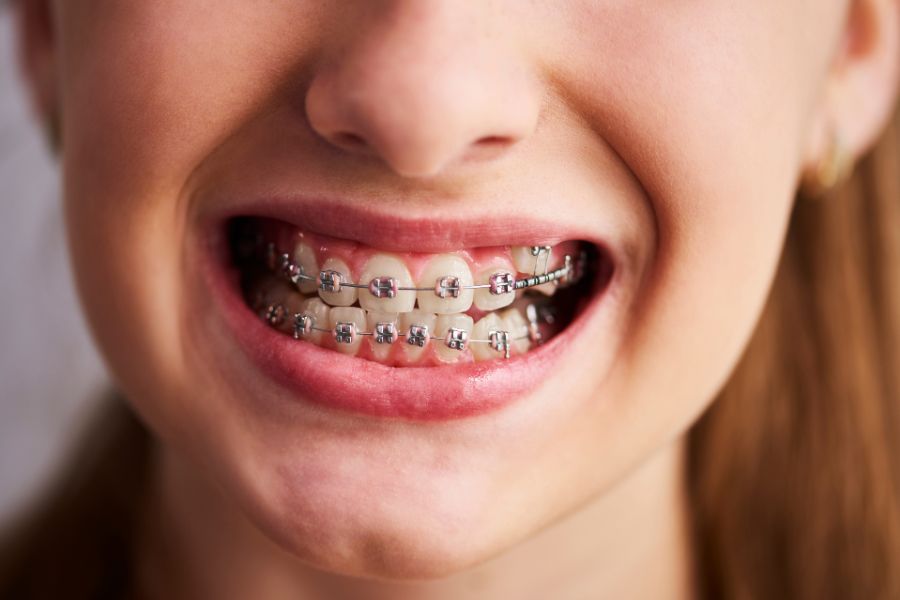Crossbites occur when some upper teeth rest inside the lower teeth when the mouth is closed. This misalignment can lead to uneven teeth wear, changes in facial symmetry, and even issues with jaw growth in severe cases. Braces, offering an effective solution, can help guide teeth into the correct position, remedying the crossbite. Depending on whether the crossbite is anterior or posterior, an orthodontist will devise a specific treatment plan. This plan might include a combination of braces, retainers, and in some cases, maxillary expanders to achieve the desired results. Read more.
Spacing issues or diastema, another form of malocclusion, refers to noticeable gaps between teeth. These spaces can occur anywhere in the mouth but are most noticeable between the front teeth. While some people might appreciate this unique feature, others might want to close these spaces for aesthetic reasons or to address any associated oral health issues. The brackets and wires of braces work together to shift the teeth, closing gaps, and bringing teeth into proper alignment. This process creates a more seamless and uniform appearance, contributing to a balanced and appealing smile
Conclusion
Navigating the world of orthodontics can seem overwhelming at first, given the wide variety of malocclusions and their corresponding treatment options. However, understanding these dental anomalies and how braces correct them can be a reassuring first step towards a healthier, more confident smile.
Braces, being highly effective in correcting most malocclusions, have revolutionized dental health, ensuring optimal tooth and jaw alignment. They aid in addressing a range of issues – from crowded teeth and overbites to underbites and spacing issues – enhancing overall oral health, aesthetics, and the quality of life.

